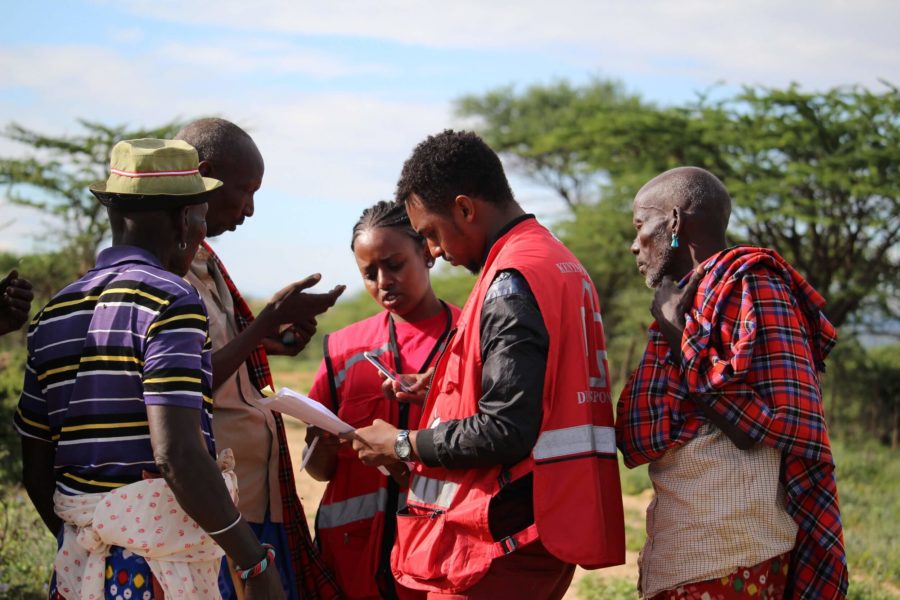Digital IDs in the humanitarian sector: what’s the big deal?


Oldoniyro, Kenya 2018: In a field pilot utilizing cash assistance and blockchain technology conducted by the Kenya Red Cross and IFRC, it was recognized that lack of official ID was a hindrance to receiving assistance. In the published learning review it was noted that 25% of the Kenya Red Cross’ caseload have no official IDs, highlighting the need to address the issue of identities. Photo credit: Kenya Red Cross
In disaster and crisis situations, members of affected communities who do not have an officially recognized form of identification (ID) can face barriers to receiving aid. Without ID, people made vulnerable by their situations cannot prove who they are, making it impossible for aid agencies to “know their customer” – often a pre-requisite for delivering services in an accountable way. While these challenges can sometimes be overcome, for instance through trusted proxies who do have an ID, such analogue solutions are not ideal.
Through a series of expert interviews and case studies of existing projects, a new report written by Oxford Centre for Technology and Development, commissioned by IFRC, and supported by the DIGID consortium (Norwegian Red Cross, Norwegian Refugee Council, Norwegian Church Aid, Save the Children Norway), Digital Identity: An Analysis for the Humanitarian Sector looks at the opportunities offered by digital identity technologies in humanitarian contexts, but also the risks. The report lists technical, ethical and sustainability aspects of digital ID solutions for organizations looking to explore, learn, and invest in such solutions.
For affected communities, obtaining a digital ID issued by humanitarian organizations can make it much easier (or indeed possible in the first place) to access services, including cash and voucher assistance, in multiple ways. First, they can use the digital ID to prove their identity where this was not previously possible due to a lack of official ID. Second, they can store certain attributes or credentials digitally, allowing them to have portable access to information such as training or education certificates, health records or legal records that might otherwise be left behind or destroyed when a disaster hits. Third, they can choose to reveal only relevant pieces of information instead of all their digital wallet’s contents.
The report points out that in an ideal world, digital ID technology would be “interoperable” throughout the sector whereby different humanitarian organizations would be able to recognize digital ID credentials, check the issuer, and extract only the data that is being shared by the owner of the digital ID. In this way, members of affected communities could avoid having to register repeatedly (and potentially having to relive trauma as they recount their story), better preserving their dignity.
“Without ID, people made vulnerable by their situations cannot prove who they are, making it impossible for aid agencies to “know their customer” – often a pre-requisite for delivering services in an accountable way.
Meanwhile, the report finds that aid organizations would also benefit from avoiding such repeat registration as their process could be made more time- and cost-efficient by deploying digital ID systems. Another advantage of an interoperable solution would be that trust and collaboration between aid organizations would be enhanced. The DIGID consortium was established for this very purpose: to see how different agencies can work together to best deliver services instead of developing siloed systems.
But the report also discusses challenges to the successful implementation of digital IDs and makes recommendations to address these:
- Developing and rolling out a solution has a considerable cost, in terms of both money and time, including the need to upskill staff and volunteers.
- Concerns around data privacy must also be addressed to maintain trust between organizations and the communities they serve.
- Digital ID solutions depend on certain levels of literacy and access to technology and devices that can be variable and limited in crisis-affected communities.
Despite these difficulties, the report offers hope that digital IDs will come to form an integral part of delivering humanitarian services, including cash and voucher assistance. In a rapidly evolving ecosystem of assistance and technology, humanitarian actors must involve themselves in the process from the outset, or risk having to play catch-up in an environment over which they have little or no control.
The DIGID consortium also held a webinar introducing this report, as part of Data and Digital Week in April 2021.

